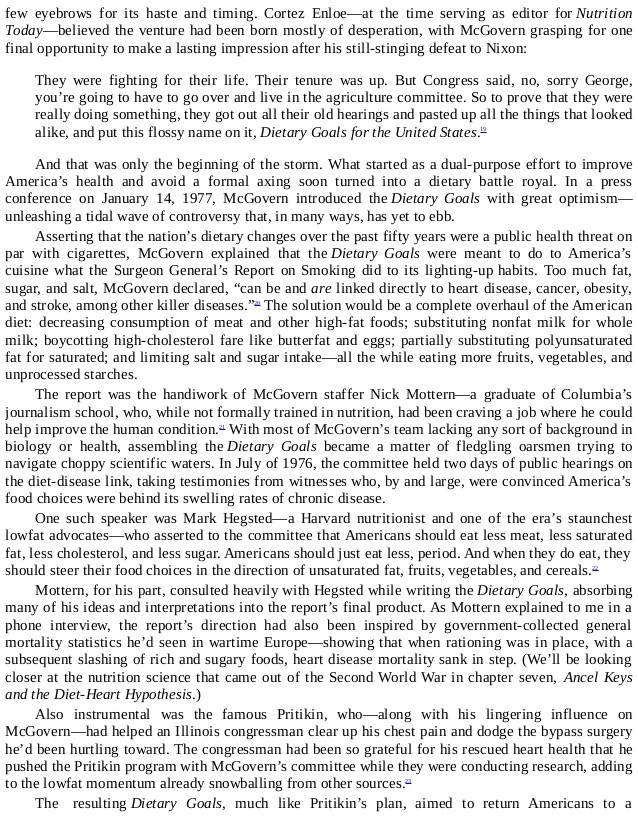Cashing in on Commodities Three Ways to Profit From Record Meat and Dairy Prices Money Morning
Post on: 18 Апрель, 2015 No Comment

display>
Editor’s Note. This is the eighth installment of a new Money Morning series highlighting investment opportunities in the global bull market for commodities .
By Jennifer Yousfi
Managing Editor
Although meat-and-dairy prices are expected to zoom even higher from their current record levels, this slice of the commodities boom won’t be a slam-dunk profit play for investors: Many food producers are watching the revenue gains they’re reaping from the rising market prices get wiped by even bigger spikes in commodity-related expenses.
We are in the early stages of what will become a big mess for producers of food products, including meat-and-dairy offerings, Greg Wagner, a senior analyst at Ag Resource Co. told the Dow Jones News Service . Over the next few years, retail food prices will rise like never before
This explosion in prices that’s hitting the U.S. consumer right in the pocketbook is due to spiraling global demand, a nose-diving greenback, soaring energy costs and a big surge in the price of grains that are used both to feed meat-and-dairy herds and as a raw material in ethanol, the crude-oil alternative for which demand also is escalating.
Meat-and-Dairy Prices Meet the Global Commodities Boom
U.S. consumers are finally feeling the pinch of the global commodities boom especially when it comes to meat-and-dairy prices. Indeed, after decades in which food prices rose at a very predictable average-annual pace of 3%, U.S. consumers in the past two years have suddenly experienced the kind of food-price uncertainty that’s long been a hallmark of less-developed economies.
In the past two years, retail milk prices have spiked more than 20%, cheese has jumped by nearly the same amount, and Grade A eggs have rocketed nearly 70%. Beef, pork and poultry prices all have escalated sharply.
And don’t expect your grocery bill to go down anytime soon.
In fact, in a study released only two weeks ago, former ConAgra Foods Inc. (CAG ) Chief Economist Bill Lapp predicted that food prices will advance at the record-breaking pace of 9% a year from 2009 until the end of 2012. At that rate, food costs once 10% of the budget of a U.S. household could rise by 40%-50% or more over the next couple of years.
Lapp, now with Advanced Economic Solutions. says the U.S. government mandate for ethanol production is the most significant factor driving corn and other agricultural commodity prices to record levels.
Story continues below
(The U.S. ethanol initiative relies on corn as a key ingredient unlike Brazil’s very successful ethanol-fuel program. which is based on sugar cane. As Money Morning has reported, scientists in the United States and other countries are looking at ways of developing ethanol from cheap-and-plentiful prairie grasses ).
The expenses that go into bringing a food product to the supermarket shelf right now represents about 19% of each dollar a U.S. consumer spends on food. Over the next five years, that number is expected to jump to 29.9%, Lapp says.
And the single-biggest expense of food production is corn.
Lapp also points out that today there is no grain stock buffer in storage—in the United States or around the world—to mitigate the explosion in corn prices, which have hit a record $7 a bushel.
Almost half of U.S. produced corn goes to feed livestock, which means the prices of meat and dairy products are highly correlated to the price of corn.
Growing global demand helped cause corn prices to escalate from less than $2 a bushel in 2005 to $3.40 a bushel last year and then to double to nearly $8 a bushel this year. In fact, the most popular corn-futures contract hit a record price of $7.9925 a bushel last Friday, before skidding back on Monday. Even so, corn prices were up 26% in June alone, the single-biggest monthly gain in 20 years, according to Bloomberg News .
Corn costs have doubled. from $4 a bushel to $8, while energy costs have gone through the roof, economist Glen Langan told BloggingStocks.com . This will force many producers out of the market
Only the most efficient, modern producers will survive, with a few exceptions, Langan added. That will easily push meat and poultry prices 20% higher or more from current level Dairy is harder to predict, because it’s more localized, but there will be dairy price increases, too
Beefed Up Meat & Dairy Prices
The high cost of feed has also strained the markets for such dairy-product prices as milk, cheese and yogurt. And with good reason, since 65% to 75% of dairy farmers’ production costs are for feed, Chris Galen, a spokesman for the National Milk Producers Federation, told The AP .
The USDA’s June issue of the Livestock, Dairy and Poultry Outlook confirms that view.
Milk production is forecast to rise only fractionally (about 0.5%) in 2009, as higher feed costs are expected to slow growth in milk per cow and as cow numbers decline slightly, the Outlook read.
Meat producers also are watching their shares get tenderized by higher costs.
Even at current prices, U.S. beef producers already have to allocate 60% to 70% of their operating budgets to feed costs, The Associated Press reported. The huge costs are putting some of the smaller operations out of business, and others are cutting back on the number of cattle they hold. Cattle futures touched record highs last month as a result.
In fact, production levels for beef, pork and chicken are all being outpaced by consumption, according to the Livestock and Poultry: World Markets and Trade report from the U.S. Department of Agriculture. And that has strained the bottom line of many meat producers.
Our Top Three Global Meat-and-Dairy Plays
Last week, Tyson Foods Inc. (TSN ) announced it would sell its Canadian plant to XL Foods Inc. for $105 million, pending regulatory approval. Canadian livestock farmers were sad to see the American firm go.
It’s very disappointing to see Tyson leaving Canada, Rick Paskal, a feedlot owner in southern Alberta, told Reuters .
We had three bidders for our cattle. Today we’re down to two. That’s a pretty black day, as far as I’m concerned, Paskal said, referring to the only two major beef packers left after Tyson’s planned exit.
While the move may be bad news for Canada’s beef farmers, it’s quite the opposite for investors: This shift is part of a back-to-basics refocusing strategy for Tyson, which made its name in the poultry market.
Without hesitation, we believe the sale is a positive, as the Canadian beef business not only has been a material drag but likely would have continued to generate losses for the foreseeable future, wrote BMO’s Kenneth Zaslow in a note to clients after the sale was announced.
And while it continues to struggle to make money with its domestic chicken business, Tyson is looking to capitalize on powerful global trends one being the so-called BRIC economies of Brazil, Russia, China and India.
Its BRIC market of choice: India.
Just this week, Tyson announced it had acquired a 51% stake in India’s Godrej Foods Ltd. which sells retail fresh chicken, chicken nuggets and patties, MarketWatch.com reported. It is a subsidiary of Godrej Agrovet Ltd. an agri-biotech company that has yearly sales of about $250 million.

Tyson, one of the largest U.S.-based producers of poultry products, says the joint venture will be situated in facilities in such key India cities as Mumbai and Bangalore, and will generate $50 million in annual sales. The U.S. company will use its production methods to help Godrej improve and expand production, build newer facilities to expand the duo’s reach, and to develop new kinds of products.
We believe the timing is right for us to bring our expertise and resources to this emerging market, Rick Greubel, international president at Tyson, said in a statement.
Once largely a backyard enterprise, poultry is now one of India’s fastest-growing agriculture-related markets. India is the world’s sixth-largest poultry producer and is watching as chicken consumption advanced at an average annual pace of 11.3% between 1990 and 2000. Now India’s consumers are shifting their tastes from only eating fresh chicken, to embracing frozen poultry products.
Tyson’s shares have plenty of room to rebound: At yesterday’s closing price of $14.31 each, they’re down 40% from their 12-month high.
General Mills Inc. (GIS ) is another of the food-manufacturing firms to be hard hit by the soaring cost of raw ingredients. For its fiscal fourth quarter ended May 25, a 12.9% increase in sales wasn’t enough to offset the bottom-line damage brought on by rising commodity costs.
Net income declined 17.4% to $185.2 million, or 53 cents per share, down from $224.1 million, or 62 cents per share, for the same period a year prior, Forbes reported.
But investors who strike here may be buying into a high-quality company whose fortunes are about to turn: General Mills is one of those rare companies that appears to be passing its increased costs along to its customers by raising prices but without taking a big sales hit.
Remarkably, the company may actually be boosting its overall sales via this initiative.
General Mills is justifying the premium it has to charge to make it through rising input product cost and seeing higher sales volumes even as it is raising prices, analyst Matt Arnold of Edward Jones analyst Matt Arnold told Forbes .
It’s the kind of company we like here at Money Morning . It has a terrific brand name, offering such products as Pillsbury breakfast pastries and baked goods, Green Giant canned vegetables, General Mills cereals, and Yoplait yogurt.
Chief Executive Officer Ken Powell spent 20% more on U.S. marketing, spurring higher sales during the most recent quarter one of the five keys to picking a bear market stock. And it just announced a 10% increase in its dividend payout a second of those five bear-market investing secrets [Check out our related story on bear-market investing by Investment Director Keith Fitz-Gerald in this issue of Money Morning ].
Dean Foods Co. (DF ) is another firm that has felt the harsh sting of high commodity prices, but the Dallas-based firm has also slashed costs at the same time it increased prices and boosted its profit outlook .
We also like Dean because it’s carving out a solid niche in the organic food portion of the food market a niche that’s gaining popularity as a graying U.S. population becomes more concerned about what it eats. Organic products command a market premium, making it easier to raise prices in an inflationary environment.
[Executive Editor William Patalon III contributed to this report.]
News and Related Story Links:
- BloggingStocks:
Record corn prices mean more expensive meat, dairy
- Forbes:
Commodity Volatility Soaks General Mills
- Money Morning:














